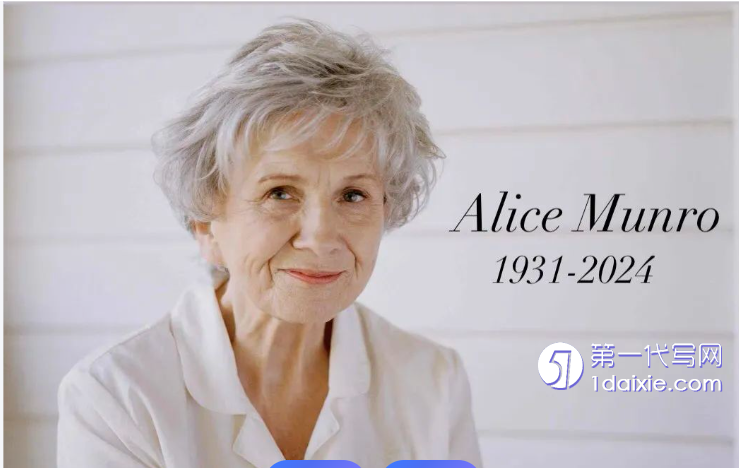本文是一篇英语论文,本文通过探索《逃离》这一叙事文本中“被讲述者”、“讲述者”和“读者”三方的伦理如何在叙事过程中建构起来,为研究门罗代表作《逃离》提供新的视角,并以此揭示门罗作为真实作者试图向读者,特别是女性读者传达的伦理意图,即相比于性际对抗与冲突,将女性引向对突破困境的探索和对人生的思考更富有意义,也使《逃离》成为一部具有深刻伦理意义的文学作品。
Chapter One Ethics of “The Told”: The Struggled and Stoical Women
1.1 Ethical Positions of Women Characters
1.1.1 The Alienated Daughter: Ethical Position in Filiation
As a short story writer who is famous for writing female stories from a female perspective, Munro’s interpersonal relationships at various levels are an unavoidable topic. Among them, the number of works discussing filiation relationship is less than that of marriage. But as a woman, the first social identity is the “daughter” from the moment of birth, so family relations must occupy an essential part in the growth of her. In Runaway, Munro includes three short stories about a heroine Juliet, namely “Chance”, “Soon” and “Silence”. These three short stories are also called Munro’s “Female Destiny Trilogy”. They are independent but interconnected. By linking the three novels, we can find that Munro constructs a diachronic filiation relationship. Juliet is the protagonist throughout the three novels. She is a daughter of estranged parents in “Chance” and “Soon”, but a mother of an estranged daughter Penelope in “Silence”. In Munro’s stories, women are always in the dislocation of emotion. Family ethics makes women enter a dilemma in the filiation relationship, and locks their individual firmly. It is difficult to break through, and be forced to become the daughter of the alienated mother and the mother of the expected daughter resignedly.
The protagonist of the trilogy, Juliet, her parenting relationship is in a delicate situation between intimacy and alienation. Juliet’s father Sam is a teacher in the county public middle school, and her mother Sara, as a housewife, undertakes all kinds of work at home. In “Chance”, Juliet, then 21 years old, is tall, fair-skinned, and well-proportioned, working on her PhD thesis in Classics, but it is still difficult for her to be truly recognized by the professor because of her female identity. “They were grateful these days for anybody who took up ancient languages, and particularly for someone so gifted—but they were worried, as well. The problem was that she was a girl” (Munro, 2006:53).

1.2 Feminine Ethical Principle in Runaway: The Stoical Regression
The anxiety and insecurity of existing in the world, the difficulty of understanding and accepting oneself, and the constant loneliness in the depths of the soul, Munro writes about the anxiety of “existence” that every individual encounters in the most ordinary life in the shades of deep and shallow. She breaks through the common description of the realistic literature of the 19th century that can represent the living state of a certain class or a certain group. Her characters are not derivatives of the concept of a certain era, but “special people” and “separate individuals”. Her description does not seek models, universals or teachings, but simply follows an existing, that is, the real outline of a change. But this seemingly bleak life will reveal as much as anyone else, because everyone bears the full character of the human condition.
By analyzing the conversations, behaviors and choices of female characters in Munro’s Runaway from parenting, marriage and social relations, the difficulties and struggles faced by women at all levels, and the ethics of “the person to be told” at the story level can be shown. In the quiet life, the heroines in Munro’s works, while swallowing the ridicule and dissatisfaction of life, are secretly breeding the power of destruction, waiting for the opportunity, breaking the seeds, but falling silent after each outbreak, returning to the original state with bitterness.
Chapter Two Ethics of “The Telling”: Dialectic Ethical Value of Existence of Women
2.1 Ethical Attitude of The Narrator: Understanding and Encouragement
The ethics of the narrator is related to the narrator’s handling of events, which “is bound to convey his attitude towards the subject and the audience” (Phelan, 2005: 23). Functioning as the primary narrative agent, the narrator operates the responsibilities of declaring, illustrating and evaluating. The most fundamental thing is how the specific rhetorical strategies are employed in event representation and how the functional dynamics of narrative techniques are utilized throughout the telling process. For example, even though it is “an implicit voice such as ‘double-voice’ discourse, the emergence of different types of voices is an important aspect worthy of attention” (Phelan, 1996: 90). This narrative presence may manifest as an overt textual voice, articulating explicit commentary on narrative events or character development. The narrator’s selection of rhetorical strategies and representational methods inevitably reveals their evaluative stance toward narrative content, thereby projecting their underlying ethical orientatio. In Runaway, the narrator’s ethical attitude can be mainly drawn from the techniques of these two aspects: the use of free indirect speech and unreliable narration.
2.2 Ethical Preference of The Implied Author: The Dialectic and Mild Feminism
The ontological status of author has remained a persistent subject of theoretical debate throughout literary history. While certain critical approaches emphasize the author’s intentionality as essential interpretive frameworks, alternative perspectives, notably Roland Barthes’ concept of “the Death of the Author”, advocate for text-centered analysis, because “it is language which speaks, not the author” (Lodge, 2000). Influenced by the “new criticism”, Wayne C. Booth rarely mentions the real author directly, “a very important and innovative concept was introduced” (Shen, 2008), instead: “the implied author”, which he deems is the “second self of the real author” (Booth, 1983). James Phelan is both a follower and an innovator, in his view, implied author “refers to an agent created by a real author who is responsible for making the text exist” (Phelan, 2005: 13). In addition, Phelan also referred to the implied author as “the implied X” (Phelan, 2005: 13). Therefore, the analysis will employ the concept of “the implied Munro” when examining the ethical dimensions of authorial presence in Runaway. As previously established, the ethical position of the implied author fundamentally manifests through their narrative treatment. Therefore, through the specific study of the strategies implied author employed in Runaway, the ethics of “the implied Munro” at the discourse level emerged, that is, the second layer of the ethics of “the telling” in Runaway.
Chapter Three Ethics of “The Reading”: Identifying with the Ethics of Runaway..........43
3.1. Sympathetic Identification: Resonance on the Ethical Dilemma of Characters . 44
3.2 Associative Identification: Ethical Projection of Self-Experience ....................... 46
3.3 Cathartic Identification: The Ethical Introspection on the Plight of Women ....... 47
Conclusion ................................ 50
Chapter Three Ethics of “The Reading”: Identifying with the Ethics of Runaway
3.1 Sympathetic Identification: Resonance on The Ethical Dilemma of Women Characters
“By sympathetic identification, it refers to the aesthetic affect of projecting oneself into the alien self, a process which eliminates the admiring distance and can inspire feelings in the spectator or reader that will lead to a solidarization with the suffering hero” (Jauss, 1982:172) In other words, even though the story might not have a direct relation with the reader’s personal experience, the reader will still complete the process of emotional input to character’s dilemma in the reading process, then generate emotional empathy, and accept the ethics of the text. Munro’s delicate description of the women characters’ ethical dilemmas and the accurate capture of their psychological movements in the text will both help readers to better complete the sympathetic identification.
In the short story “Runaway”, the protagonist Carla tries to escape from the bondage of toxic marriage, but in the process of escaping, she arouses complex feelings for her husband, and finally returns to the marriage life. This plot may not be related to the reader’s personal experience, but Munro constructs a text world full of ethical tension through delicate narrative techniques and complex psychological movement. In the process of reading, readers are not only attracted by the plot of the story, but also reflect on and judge character’s choices at the ethical level, and finally achieve recognition with the help of the expression of the text. Therefore, this identification is not a simple moral judgment, but based on a deep understanding of the inner world of the characters. When Carla decides to leave to write a message to her husband Clark, she writes a wrong word in panic: “I have gone away. I will be all write.” (Munro, 2006:27) Then Munro objectively describes Carla’s psychology from Sylvia’s perspective: “She was sure Carla knew right from write.

Conclusion
Alice Munro has witnessed and participated in the process of Canadian literature stepping out of the edge and gradually being accepted and recognized by the world literary world with nearly 60 years of creation, from the Canadian town girl to the successful writer, from obscurity when she first entered the literary world to the great brilliance in the world literary world in recent years. As a woman writer, Munro is well aware of the fact that, in a patriarchal society, women are mostly in a situation of being defined and spoken, so they rarely get the status and identity of equal dialogue and speech with men. Feeling confused about women’s identity, Munro chooses female writing to express her rebellion against men’s speech on behalf of women and her pursuit of women’s self by writing about female experiences. With her love for short stories, unremitting persistence and concentrated creation, she continues to explore and verify the possibility of short stories and female writing. Her writing creation is based on real life, writing the story of women’s lives, full of care for their living conditions. She takes care of the female group from her own life experience, shapes the real female group in her writings, and reveals the social reality of their predicament. By describing the struggle of women in the predicament, she explores the way of women’s survival and conveys her own dialectical and moderate ethics.
reference(omitted)
